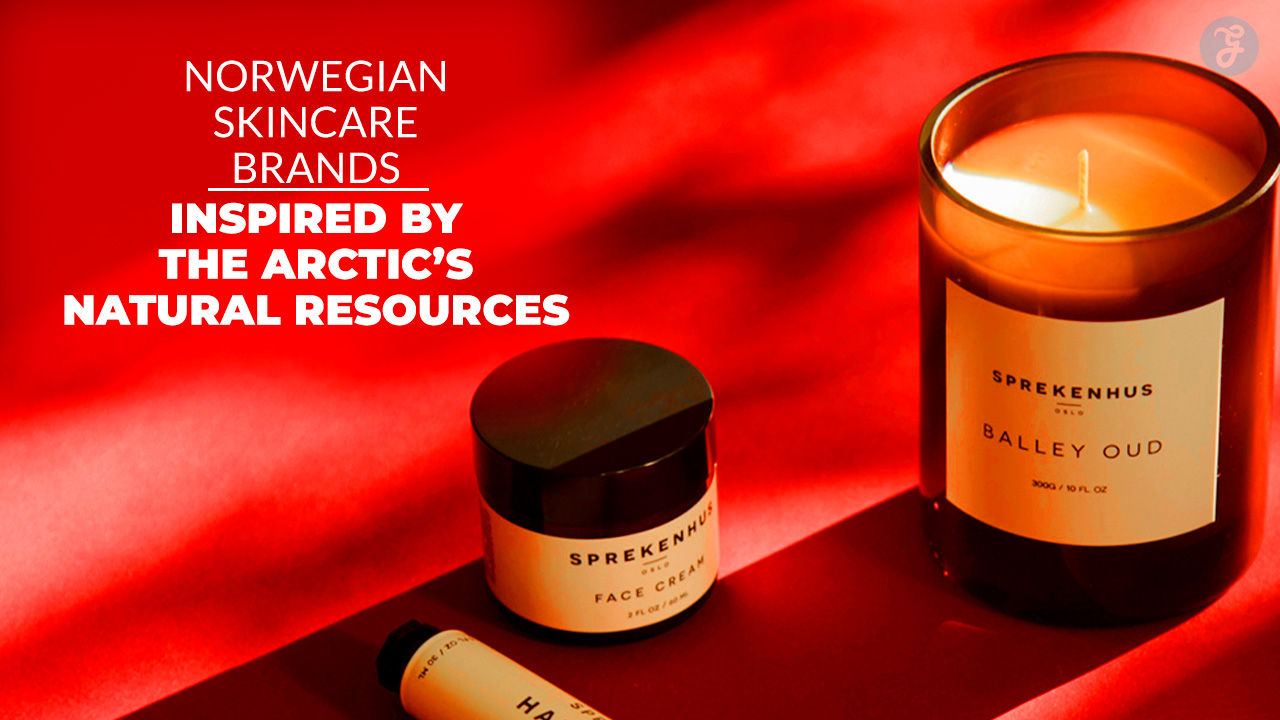When we talk about the most obese countries in the world, we’re really talking about places where a large portion of the population has packed on too much fat. However, weight on its own doesn’t tell the whole story.
For instance, a tall guy who’s 6 feet 2 inches and 80 kg is in a different boat than someone who’s 5 feet 6 inches and the same weight. That’s where BMI, or Body Mass Index, comes into play. It’s a handy little formula that takes both height and weight into consideration.
According to the World Health Organization, if your BMI hits 30 or above, you’re overweight. If it’s 30 or more, you’re considered obese. And here’s a startling fact: since 1975, worldwide obesity has tripled. In 2016, nearly 40% of the global adult population was overweight. About 13% of all adults were straight-up obese. Even kids aren’t spared. A whopping 39 million kiddos under 5 are obese, with 340 million aged 5-19 either obese or overweight.
And here’s a grim truth: in certain countries, more people die from obesity-related issues than from being underweight. In 2017, obesity was the reason behind 4.72 million deaths worldwide. Fiji, Bahrain, and American Samoa are the hardest hit, with alarming percentages of deaths linked to obesity.
But what’s causing this global weight gain? A big part is our love for calorie-laden foods, especially those sweet drinks and high-fat snacks. On average, we’re now consuming around 600 calories more per day than we did in the 1960s. Major brands like Coca-Cola, PepsiCo, Mondelez, McDonald’s, and Yum! Brands are some of the culprits, with their sugar-packed offerings.
Another issue? Our increasingly sedentary lifestyles. We’re all guilty of spending hours glued to screens or opting for Uber rides instead of a brisk walk. Plus, certain health issues, like diabetes or hyperthyroidism, can make putting on weight easier.
However, all’s not lost. Cutting back on sugar and upping our intake of fresh fruits and veggies can make a difference. A good ol’ fashioned walk can also help. For adults, a daily total of 150 minutes of walking is a good starting point. Kids should aim for an hour of physical activity.
As a society, we can also push for changes. Things like taxing sugary products, promoting healthier alternatives, and limiting junk food advertising aimed at our young ones. Making healthier food options both accessible and affordable is crucial. After all, it’s high time we took a stand against obesity!
The Approach We Follow
A Peek Into the Most Obese Countries in the World
Based on the latest scoop from the World Health Organization, we’ve rounded up a list of the 30 most obese countries. How’d we get to these numbers? We looked at data from each country and figured out what percentage of folks had a BMI over 30. And just to be clear, when we talk about the “obesity rate”, we’re averaging out the numbers for both men and women, focusing on adults aged 18 and up. Oh, and we’ve also jotted down the average BMI for each place.
So, ready to dive in? Let’s see which countries are the most obese in the world.
30 Countries with the Highest Rates of Obesity in the World

1. Nauru
- Average BMI: 32.5
- Obesity Rate: 61%
Nauru: The Unexpected Heavyweight Champion
So, ever heard of Nauru? It’s this tiny spot in the central Pacific and, brace yourself, it’s officially the world’s most obese country. Yep, a whopping 61% obesity rate! Out of its cozy population of just 10,876, nearly 95% are tipping the scales into the overweight category.
But why? Well, their diet’s heavy on the carbs – think loads of noodles, rice, sodas, and a bunch of processed stuff. Plus, with poverty being a big issue, folks often don’t have the luxury to opt for healthier food choices. And to top it off, there’s a pretty high rate of Type-2 diabetes which doesn’t help the obesity situation.
2. The Cook Islands
- Average BMI: 32.8
- Obesity Rate: 55.9%
Cook Islands: Punching Above Their Weight (Literally)
Guess who’s right behind Nauru in the global obesity rankings? The Cook Islands! This South Pacific gem has an obesity rate of 55.9%. Even with its modest population of 17,565, a surprising 84.7% of its folks are in the overweight zone with a BMI tipping over 25. Who would’ve thought?
3. Palau
- Average BMI: 29.2
- Obesity Rate: 55.3%
Palau: Bronze Medal in the Obesity Rankings
Stepping up to the podium in third place is Palau, right in the Pacific Ocean. They’ve got an obesity rate of 55.3%. And if we’re talking about folks who are just a bit over their ideal weight, a hefty 78.4% of the population fits the bill. Talk about some surprising stats from this tropical paradise!
4. Marshall Islands
- Average BMI: 29.2
- Obesity Rate: 52.9%
Marshall Islands: Where Paradise Meets Portion Sizes
Sitting pretty with an obesity rate of 52.9%, the Marshall Islands have found themselves in the chunky category. Even with their tight-knit community, the combo of not-so-great diets and the pinch of poverty makes those healthier food choices a bit out of reach for many. It’s a classic case of paradise not always being perfect!
5. Tuvalu
- Average BMI: 29.3
- Obesity Rate: 51.6%
Tuvalu’s Tummy Trouble: It’s a Global Affair!
Tuvalu’s joining the heavy-hitter club with an obesity rate of 51.6%, placing it in the top five. Just like its Pacific neighbors, the culprit’s pretty clear: tons of fatty, imported goodies from big players like New Zealand and the US. So, it seems even in paradise, there’s no escaping those international snack temptations!
6. Niue
- Average BMI: 31.5
- Obesity Rate: 50%
Niue: Coming in Sixth and Sweet
Rolling in at number six is Niue, with half its population landing in the obese zone. And if you’re counting those just tipping the scales, that’s a hefty 70% considered overweight. Located smack dab in the Pacific, this spot, like its neighbors, has a sweet tooth and love for fats that’s pushing those numbers up. Ah, the challenges of paradise!
7. Tonga
- Average BMI: 31.9
- Obesity Rate: 48.2%
Tonga’s Tussle with Tummies: Landing 7th in the Weighty World Rankings
Say hello to Tonga, right there in Pacific Oceania! They’re rocking a 48.2% obesity rate, securing the 7th spot on our global leaderboard. Why? Well, it’s a mix of those tempting processed foods imported from the big countries, and let’s not forget that affordable fatty meat from New Zealand that’s found its way to many a Tongan plate. Sometimes, those international flavors come with a few extra pounds!
8. Samoa
- Average BMI: 31.7
- Obesity Rate: 47.3%
With an obesity rate of 47.3%, Samoa ranks 8th on the global list of countries with the highest obesity levels. Despite its modest population of 197,000, the country faces significant health challenges, particularly the widespread occurrence of type-2 diabetes, which contributes largely to the obesity problem.
9. Kiribati
- Average BMI: 29.6
- Obesity Rate: 46%
Kiribati, nestled in the Pacific Ocean, has an alarming obesity rate of 46%. This places the island nation 9th on the list of the world’s most obese countries. Despite its smaller population of just 118,000 people, the weighty issue is prominent.
10. Micronesia (the Federated States of)
- Average BMI: 29.4
- Obesity Rate: 45.8%
Located in Oceania, the Federated States of Micronesia grapples with an obesity rate of 45.8%, despite its modest population of 114,000. A major factor behind this is the country’s reliance on imported, highly processed foods from the US, which has contributed to the rise in obesity levels.
11. Kuwait
- Average BMI: 30.0
- Obesity Rate: 37.9%
Kuwait holds the unfortunate title of being the most obese country in the Middle East, boasting an obesity rate of 37.9%. As a developed nation, its residents often indulge in rich diets and lead sedentary lives. Notably, the per capita consumption of sugar-sweetened drinks is astonishingly high, with an average of 98 liters consumed annually.
12. United States of America
- Average BMI: 28.5
- Obesity Rate: 38.2%
Among the OECD member countries, the United States stands out with a staggering obesity rate of 38.2%. A significant contributor to this statistic is the fact that over 71.6% of Americans aged 20 and above are overweight. When we zoom in on individual states, West Virginia takes the crown with the same obesity rate of 71.6%, making it the most obese state in the country. Interestingly, the U.S. also tops the list in sugar-sweetened beverage consumption, with an average American drinking a whopping 236.6 liters annually. This high consumption can be linked to the popularity of big brands in the country. Household names like Coca-Cola, PepsiCo, Mondelez International, McDonald’s, and Yum! Brands, all known for their sugar-rich products, have a significant presence in the American market.
13. Jordan
- Average BMI: 28.9
- Obesity Rate: 35.5%
Nestled at the intersection of Asia, Africa, and Europe, this country faces a concerning obesity rate of 35.5%. Delving deeper, we find that a striking 69.6% of its population is overweight. The surge in obesity can be attributed to unbalanced diets and the hustle and bustle of professional and social commitments, leaving little time for healthier lifestyle choices.
14. Saudi Arabia
- Average BMI: 28.5
- Obesity Rate: 35.4%
Saudi Arabia, with its vast oil wealth, faces an emerging health concern: a soaring obesity rate of 35.4%, placing it 14th globally. The nation’s primarily sedentary lifestyle and a general lack of awareness regarding balanced diets contribute significantly to this issue. A notable aspect of their consumption patterns is the love for sugar-sweetened beverages, with the average Saudi consuming 127.5 liters annually. Global brands like Coca-Cola, PepsiCo, Mondelez International, McDonald’s, and Yum! Brands, renowned for their sugar-laden products, have also found a loyal customer base in Saudi Arabia.
15. Qatar
- Average BMI: 29.2
- Obesity Rate: 35.1%
Qatar, with an obesity rate of 35.1%, ranks 15th among the world’s most obese nations. A significant 71.7% of its population is overweight. The rise in obesity can be attributed to factors like diabetes, high consumption of sugary products, and the widespread sedentary way of life.
16. Libya
- Average BMI: 28.4
- Obesity Rate: 32.5%
Situated in North Africa, Libya grapples with an obesity rate of 32.5%, placing it 16th globally. Alarmingly, obesity is widespread across all ages and genders. In fact, over two-thirds of the population, or 66.8%, have a BMI exceeding 25. The primary culprit behind this issue appears to be an unbalanced diet. Interestingly, despite the high obesity rate, the consumption of sugar-sweetened beverages is surprisingly low, with Libyans consuming a mere 1.7 liters per person annually.
17. Turkey
- Average BMI: 27.8
- Obesity Rate: 32.1%
Turkey holds the 17th spot globally for obesity rates and tops the chart in Europe with a rate of 32.1%. The country’s delectable cuisines, laden with fats and proteins, contribute to their high-calorie content, leading to the obesity problem. It’s noteworthy that over two-thirds of the Turkish population, or 66.8%, have a BMI exceeding 25. Additionally, the love for sugar-sweetened beverages is evident, with an average Turk consuming about 62.2 liters annually.
18. Lebanon
- Average BMI: 27.8
- Obesity Rate: 32%
Lebanon, a predominantly Muslim country in the Middle East, holds the 18th position on the list of the most obese countries in the world, with an obesity rate of 32%. The core issue seems to be a general lack of understanding and awareness about the benefits of a balanced diet. Astonishingly, almost 68% of Lebanese have a BMI that exceeds 25. On the beverage front, an average Lebanese consumes around 37.4 liters of sugar-sweetened drinks every year.
19. Egypt
- Average BMI: 29.2
- Obesity Rate: 32%
Egypt, famed for its iconic pyramids in North Africa, finds itself at the 19th spot on the global list of most obese countries. With a concerning obesity rate of 32%, much of this challenge stems from imbalanced diets and a general unawareness of obesity’s ramifications. It’s notable that 63.5% of Egyptians are overweight. However, their consumption of sugar-sweetened beverages is on the lower side, with an average of 37.4 liters consumed per person each year.
20. The United Arab Emirates
- Average BMI: 29
- Obesity Rate: 31.7%
Known for its dazzling tourist hotspots like Dubai, the United Arab Emirates faces a health challenge with an obesity rate of 31.7%. With a whopping 67.8% of its population overweight, the country’s oil wealth, booming economy, and predominantly sedentary lifestyle have contributed to the rising obesity figures. The penchant for sugar-sweetened beverages is evident, with the average UAE resident consuming a significant 97.9 liters annually. Popular brands with sugary products, such as Coca-Cola, PepsiCo, Mondelez International, McDonald’s, and Yum! Brands, find a significant market in the UAE.
21. The Bahamas
- Average BMI: 28.8
- Obesity Rate: 31.6%
The Bahamas, renowned for its breathtaking tourist spots, stands at 21st place on the global obesity chart with 31.6% of its residents grappling with this health issue. Intriguingly, more than 64.4% of Bahamians have a BMI exceeding 25. Despite its small population of 389,000, a significant factor behind this health concern is the high consumption of sugary beverages. On average, a person in the Bahamas drinks about 80 liters of sugar-sweetened beverages every year.
22. New Zealand
- Average BMI: 27.9
- Obesity Rate: 30.8%
Nestled in the Southwestern Pacific, New Zealand, a country of picturesque islands, is grappling with obesity issues. A concerning 30.8% of its residents have a BMI above 30, and a notable 68% are overweight. Breaking it down by gender, the average BMI is 28.29 for men and 28.1 for women. Sugary products from global brands like Coca-Cola, PepsiCo, Mondelez International, McDonald’s, and Yum! Brands enjoy significant popularity here. This love for sweetened beverages is evident in the 81.6 liters consumed per New Zealander annually, contributing to the nation’s rising obesity rates.
23. Iraq
- Average BMI: 28.0
- Obesity Rate: 30.4%
Situated in the Middle East, Iraq, known for its abundant oil reserves, is confronting an obesity challenge, landing 23rd on the global list. About 30.4% of its 39.3 million residents face obesity, while a staggering 64.6% are tipping the scales with a BMI over 25kg/m^2. While Iraqis do enjoy their protein and carb-rich meals, their consumption of sugar-sweetened beverages stands at a notable 39.9 liters per person annually. This rising concern is further amplified by the widespread sedentary lifestyle in the country.
24. Fiji
- Average BMI: 27.2
- Obesity Rate: 30.2%
Located in the sun-kissed South Pacific Ocean, Fiji, a beautiful island nation, grapples with weighty issues. About 30.2% of its residents have a BMI exceeding 30, and shockingly, 63.8% are considered overweight. This places Fiji at 24th on the world’s most obese countries’ list. With a tight-knit population of 439,000, their fondness for sugar-sweetened drinks is evident, guzzling down an average of 49.4 liters per person each year. This high sugar intake plays a significant role in the country’s obesity challenge.
25. Bahrain
- Average BMI: 28.2
- Obesity Rate:29.8%
Bahrain, a flourishing nation in the Middle East, sits at the 25th spot on the global obesity list. Almost 30% of its 1.64 million inhabitants are wrestling with obesity. In a little over four decades, the average BMI for Bahraini men has crept up, moving from 23 in 1975 to 24.89 in 2016. Alarmingly, nearly two-thirds of the population, or 65.8% to be precise, fall into the overweight category, boasting a BMI of 25 or above. Their affection for sugar-laden drinks is notable, with the average Bahraini consuming 95.4 liters annually. Brands known for their sugary delights, like Coca-Cola, PepsiCo, Mondelez International, McDonald’s, and Yum! Brands, are particularly favored in Bahrain.









































